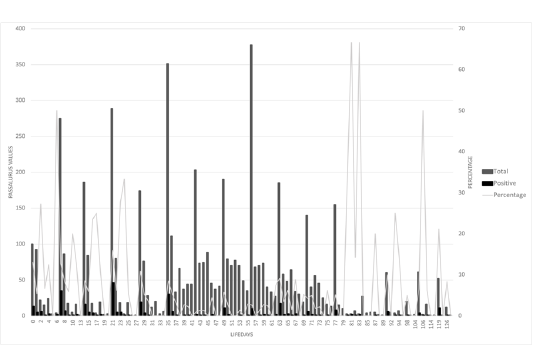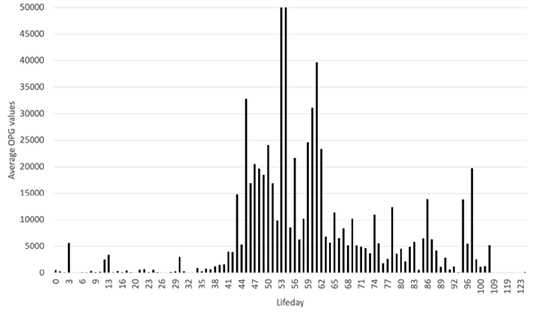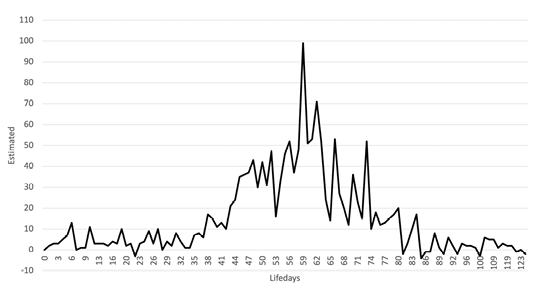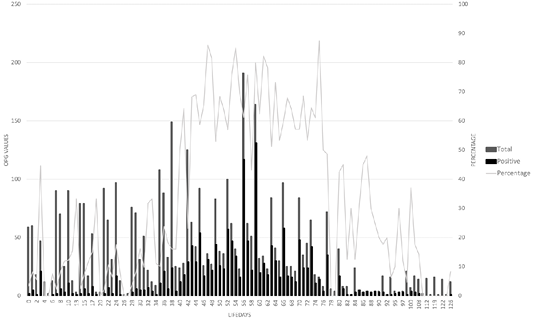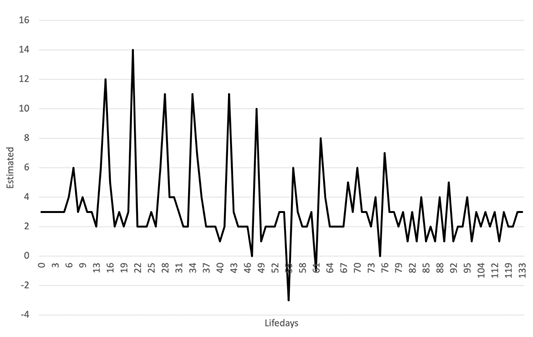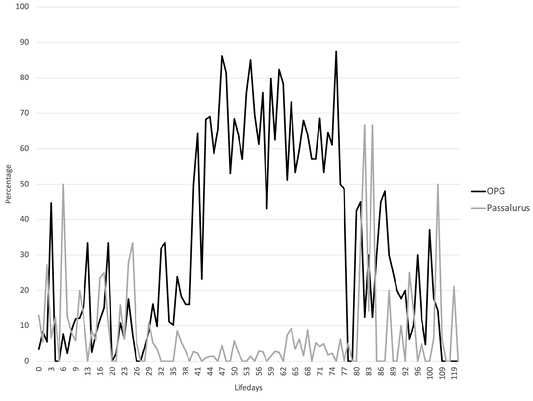Eimeria Oocysts and Passalurus ambiguus Infection of Farmed Rabbits Depending on the Age
Eimeria Oocysts and Passalurus ambiguus Infection of Farmed Rabbits Depending on the Age
Csongor Demeter1, Zoltán Német2, Zsolt Gerencsér1, Róbert Juráskó1, András Mayer1, Boróka Bárdos1*, Anett Demeter-Jeremiás3, Erika Lencsés-Varga4, Zsolt Matics4
A: Sporulated Eimeria oocysts. B: Passalurus ambiguus egg.
The total number of samples and the number and ratio of oocyst positive samples.
Average OPG values in faeces samples depending on the age of rabbits.
Evolution of model-estimated oocyst infection per day of life.
The total number of samples and the number and ratio of Passalurus positive samples.
Evolution of model-estimated Passalurus ambiguus infection per day of life.
Percentage of positive samples of Eimeria oocysts and Passalurus eggs.





